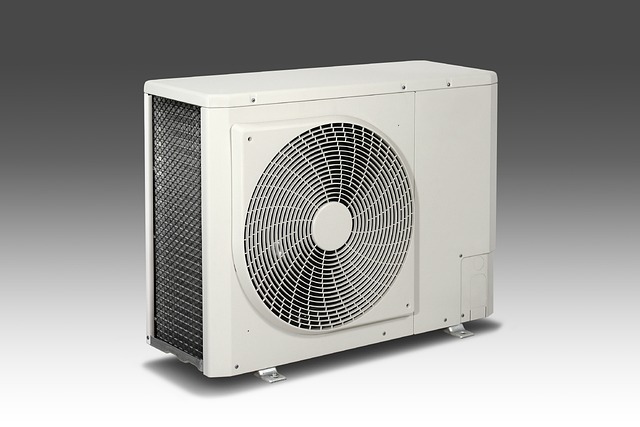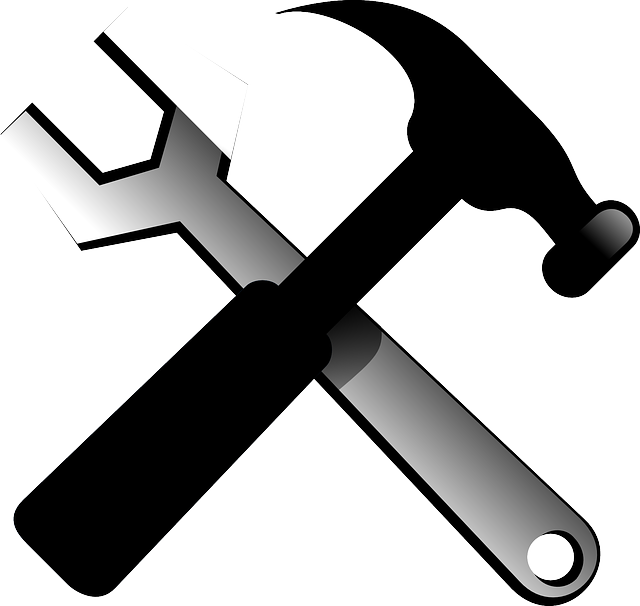Regular HVAC repair maintenance is crucial for maintaining an efficient and comfortable indoor climate. Common issues such as abnormal noises, uneven temperatures, prolonged heating/cooling times, and reduced air output quality may signal a need for HVAC system repairs. It's important to ensure that thermostats are correctly placed and set for accurate temperature control. Ductwork leaks or blockages can also hinder HVAC performance, necessitating prompt professional repair services to address these issues. Preventative maintenance, including filter cleaning/replacement, electrical connection checks, thermostat accuracy verification, parts lubrication, and overall system health assessment, helps extend the lifespan of your HVAC system, enhance its energy efficiency, and prevent breakdowns during critical times. A systematic diagnostic approach is essential for effective HVAC repair, involving checks on thermostat settings, filter conditions, ductwork integrity, outdoor unit functionality, and refrigerant levels. Advanced tools like multimeters and ampere clamps aid in diagnosing electrical issues, while ensuring proper airflow and system components' health are key to restoring comfort and efficiency. Addressing a faulty thermostat, which can lead to discomfort and higher energy bills, is often the first step in resolving HVAC underperformance issues. Regular checks and timely professional service can prevent thermostat malfunctions and ensure your HVAC system operates optimally throughout the year.
When confronted with a malfunctioning heating or cooling system, homeowners often face a spectrum of challenges. This article serves as a comprehensive guide to diagnosing and repairing common HVAC issues, ensuring your system operates at peak efficiency. We’ll delve into the significance of regular maintenance in thwarting malfunctions, and provide a detailed step-by-step approach for troubleshooting HVAC problems, from assessing thermostat accuracy to pinpointing refrigerant leaks. Understanding the role of clean air filters, the importance of inspecting heating elements, and addressing electrical component faults are key to maintaining your system’s performance. Additionally, we’ll explore strategies for dealing with noisy units, improving energy efficiency through effective insulation, and determining when it’s time to consider an HVAC system upgrade. With a focus on cost-effective DIY solutions and expert advice on selecting the right repair service, this article is your go-to resource for all aspects of HVAC repair and maintenance.
- Understanding Common Heating and Cooling System Issues
- The Role of Regular Maintenance in Preventing HVAC Malfunctions
- Step-by-Step Diagnosis of HVAC Problems
- Troubleshooting a Faulty Thermostat: Ensuring Accurate Temperature Control
Understanding Common Heating and Cooling System Issues

When it comes to maintaining a comfortable indoor environment, understanding common heating and cooling system issues is paramount. Homeowners often encounter various malfunctions that can affect the performance and efficiency of their HVAC systems. One prevalent issue is inadequate maintenance leading to reduced system efficiency. Regular upkeep is essential for ensuring the longevity of your HVAC system; neglecting this can result in elevated energy bills and a decreased lifespan of the unit. Common signs that your heating or cooling system requires HVAC repair include strange noises during operation, inconsistent temperatures across different rooms, and an unusually long time to achieve the desired temperature. Additionally, if your system is blowing out air that feels more humid or less warm/cool than usual, it may indicate a malfunction in the system’s compressor or sensor.
Another frequent concern is thermostat calibration or even thermostat malfunction. Incorrect settings can lead to the HVAC system turning on and off too frequently, which not only wears out components faster but also fails to maintain optimal indoor temperatures. Homeowners should ensure their thermostats are properly positioned and correctly calibrated to avoid unnecessary strain on the HVAC system. Furthermore, ductwork issues such as leaks or blockages can significantly impact the efficiency of your heating and cooling systems. These problems can lead to poor airflow and distribution, causing rooms to feel warmer or cooler than intended. Recognizing these common issues is the first step in addressing them promptly with professional HVAC repair services to ensure your system operates at peak performance.
The Role of Regular Maintenance in Preventing HVAC Malfunctions

Regular maintenance plays a pivotal role in ensuring the efficient operation and longevity of your HVAC system. By scheduling routine checks, homeowners can proactively address potential issues before they escalate into costly repairs. These inspections typically involve cleaning or replacing filters, inspecting and tightening electrical connections, checking thermostat calibration, lubricating moving parts, and examining the system’s overall condition. Identifying and correcting minor problems early on can prevent major malfunctions, thereby reducing the likelihood of unexpected breakdowns during extreme weather conditions. Engaging in HVAC repair maintenance is not merely a reactive measure but an investment in maintaining a comfortable indoor environment year-round. It also ensures that your system operates at peak performance, which translates to energy savings and a more sustainable living space. By adhering to a regular maintenance schedule, you can extend the life of your HVAC system and avoid the inconvenience and discomfort associated with sudden system failures.
Step-by-Step Diagnosis of HVAC Problems

When a heating or cooling system within a residential or commercial space malfunctions, timely and accurate diagnosis is paramount for efficient HVAC repair. A step-by-step approach to diagnosing HVAC issues ensures that technicians can pinpoint the source of the problem quickly, minimizing downtime and reducing the potential for further damage. The initial step involves a comprehensive inspection of the system’s components, including the thermostat, filters, ductwork, and the outdoor unit. Technicians check for signs of wear, debris accumulation, or unusual behavior in these parts that could disrupt performance. If an issue is detected with the thermostat settings, it may be resolved by recalibrating or replacing the device. Moving forward, if the filters are clogged, they are cleaned or replaced to enhance airflow and energy efficiency.
In the event of persistent problems, a more detailed diagnostic process ensues. This includes using specialized tools such as multimeters and ampere clamps to test electrical connections, measure voltage and current, and identify any short circuits or loose wiring that could cause malfunctioning. The HVAC system’s refrigerant levels are also checked to confirm adequate charge, which is critical for both heating and cooling functions. If leaks are suspected, a leak detector can trace the source of the escape. Additionally, airflow obstructions within the system are investigated, and any mechanical issues with the blower motor or bearings are addressed through adjustments or repairs. This meticulous step-by-step process facilitates comprehensive HVAC repair, ensuring that each component is functioning as intended, thereby restoring comfort to the environment.
Troubleshooting a Faulty Thermostat: Ensuring Accurate Temperature Control

When a heating and cooling system is underperforming, a common culprit is a faulty thermostat. This can lead to discomfort and increased energy consumption due to improper temperature control. HVAC repair professionals emphasize that troubleshooting a malfunctioning thermostat is often the first step in diagnosing and rectifying system issues. To ensure accurate temperature control, homeowners should start by checking the thermostat’s batteries, as a low battery can cause erratic readings and poor performance. If the batteries are fine, it may be necessary to recalibrate the thermostat. This involves adjusting the settings to reflect the actual room temperature and ensuring that the thermostat is placed away from drafts or direct sunlight, which can skew its reading. For those less comfortable with DIY solutions, consulting a professional for a thorough inspection is advisable. They can verify whether the issue lies with the thermostat itself or if it’s part of a larger system malfunction. Regular maintenance and checks can prevent such issues, ensuring that your HVAC system operates at peak efficiency throughout the year.
In conclusion, maintaining a comfortable indoor environment requires a thorough understanding of common heating and cooling system issues, as outlined in this article. Regular maintenance is pivotal in preventing malfunctions, ensuring your HVAC system operates efficiently throughout the year. The detailed diagnosis and troubleshooting guidelines provided for HVAC problems, particularly with faulty thermostats, underscore the importance of accurate temperature control within any residential or commercial setting. By adhering to the maintenance routines and following the step-by-step diagnostic processes, homeowners and professionals can effectively address HVAC repair needs, leading to a more sustainable and cost-effective solution. For those seeking expertise in HVAC repair, this article serves as a comprehensive guide to keep your systems running smoothly all season long.
